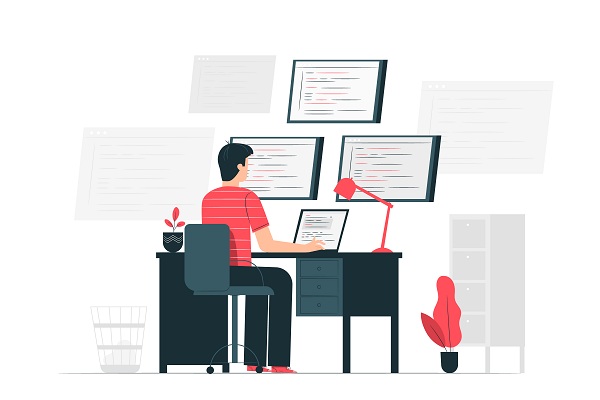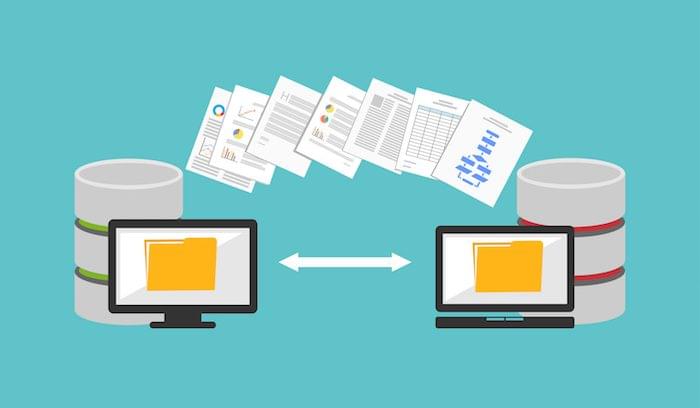Top Tips for Successful Cloud Migration Strategy
Cloud computing services have paved the way for secure storage of critical corporate data. You can count on cloud solutions for storing, managing, and accessing data using your fingertips. This revolutionary concept has facilitated modern businesses to store their data without investing in the additional storage facility. It is a major reason why many companies opt for cloud migration these days.
As your company transfers applications to the cloud, it will start getting key benefits including
- Reduced overheads and maintenance costs
- Quicker response
- Reduced operational risks
- Improved control over data
- Any-time access to data and integration of emerging technologies
- More focus on core business activities
But then, moving to the cloud is a bit complex process and you need a reliable cloud computing. If not done properly, the cloud migration process can lead your business toward chaos while making it vulnerable to cyber-attacks. Here we give five main phases of cloud migration along with strategies and best practices for completing the cloud migration process successfully.
Five Phases of Cloud Migration
1. Preparation and Planning
Just like other emerging technologies, the cloud computing concept also needs proper planning and preparation. In other words, no company should opt for cloud computing just because they are in vogue and provide a cost-effective way to store data. You need to consider your business needs and define IT portfolio before moving to the cloud. Proper preparation for migration can run the process smoothly until the end, and you can start leveraging its business benefits with ease.
2. Discover and Define IT Portfolio As mentioned above, you need to discover an IT portfolio to migrate. It consists of applications, servers, network, and interdependencies. You need to define the portfolio on the basis of your business goals and priorities. Cloud solutions take a holistic approach, and therefore, you need to think of every business aspect before migrating to the cloud. Detailed analysis of your portfolio can make your business ready for an obvious initial impact due to cloud migration.
3 & 4. Design and Validation of Applications After two phases, the focus shifts to application design and validation before migration. This phase involves continuous improvement in line with changing needs. Each application may have different migration strategy but all of them have a common goal. The cloud computing services are aimed at establishing synergy between applications and implementing an iterative approach to ensure better outcomes of cloud migration.
5. Operating Environment After the successful migration of a few applications to the cloud, your new and advanced operating environment is ready to use. You need to optimize this cloud-based environment with the help of cloud services provider to ensure that your business goals remain achievable. This is time to say goodbye to legacy data storage systems and embrace the modern operating environment known as the cloud.
Key Strategies for Cloud Migration
Before going through the best practices of cloud migration, let’s have a glimpse of key cloud migration strategy. Here it is fair to mention that each of your business application requires a separate and well-defined strategy to achieve the maximum outcome. Also, the migration process involves a combination of these strategies according to business requirements.
Rehosting
When it comes to migrating large legacy applications, rehosting can speed up the process and optimize the existing application to make the most of cloud technology.
Re-platform 
It is about changing the configuration of existing applications and optimizing them for cloud hosting without changing their architecture. Cloud computing services can help you in implementing this strategy.
Repurchase At times, legacy applications are not suitable for migrating to the cloud because of their old set of frameworks. In such cases, it is better to upgrade or replace the existing application with a cloud-compatible application. Repurchase needs a major investment during the cloud migration process.
Rebuild Cloud-hosted applications are quite different as compared to non-cloud-hosted applications. At times, companies can opt for modifying or changing the entire architecture or configuration of existing applications to add cloud-based features. Here, the cloud solutions provider can undertake a cost-benefit analysis. This analysis can assist the management to make a decision.
Retire Applications that are of no use can be retired before initiating the cloud migration process. It enables the company to focus more on the applications that are used frequently. You can reduce cost by retiring unused applications as the cloud hosting provider takes charge as per the use.
Retain Finally, you can retain a few of the existing applications in the same old environment. You can do so if these applications are too complex to migrate, critical to your business, or recently updated. In such conditions, you can consider migration of these apps in a later phase.
Now, we will go through five best practices for cloud migration.
Best Practices for Cloud Migration
1. Application Architecture

This is the first and foremost step to consider while you transfer applications to cloud. Proper understanding of the application’s architecture can enable you to come up with an effective strategy to ensure a smooth migration process. You can find out the aspects like components, dependency, and integration structure of your existing application.
2. Proper Storage PlansToday, many players offer their services in a thriving cloud platform. Some of the notable names are AWS, Microsoft Azure, and GCP (Google Cloud Platform). You can select from different cloud storage plans and data tiers as per your business requirements. But here, it is better to understand each and every storage plan carefully to avoid any problem in the future.
3. Performance Testing This is a crucial step because migrating to the cloud is always a challenging and daunting task. If your application fails to run smoothly after the migration, you need to consider other strategies. You need to find and resolve all performance-related issues before running a pilot phase after migration. You can check whether the applications offer a stable experience to the users during this pilot phase.
4. Multi-cloud Approach The multi-cloud approach enables you to avoid any shortcomings of a single cloud approach. For example, private cloud and public cloud concepts have their pros and cons, whereas a multi-cloud approach can help you overcome the cons while getting the most suitable cloud solutions for your business needs.
5. Constant Monitoring
For your existing applications, the cloud environment is new and more advanced. Therefore, you should monitor the functionality of your applications continuously to find out whether they handle all the changes and work seamlessly in the new environment. What’s more, your monitoring software for these applications should be compatible with the dynamic cloud environment.>
Concluding Lines
Cloud solutions can offer your business stability, scalability, and disaster recovery while reducing operational costs. Cloud technology remains handy if you want to stay ahead of the curve without spending a fortune. We hope these tips and best practices will assist you to migrate your business applications to the cloud and leverage a plethora of benefits.
Silver Touch Technologies is a leading cloud services provider. We offer end-to-end solutions to make the most of the cloud technology. You can get a blend of cloud applications, a centralized cloud network, and convenient management to take your business to the next level. Contact us at info@silvertouch.com for giving your business a competitive edge using cloud computing in a cost-effective way.
Recent Posts
- Hyper Converged Infrastructure- How It Benefits Modern Businesses June 17, 2024
- Your Concise Guide to Data Resilience Strategy at the Workplace April 30, 2024
- Road to Future Infrastructure- Top Trends in Data Center Modernization February 20, 2024
- How to Differentiate Cloud Types- Public vs Private vs Hybrid in 2024 January 8, 2024
- Cloud HRMS Solutions- Top Features, Benefits and Future Trends October 25, 2023
- Top advantages of VDI Solutions for your Business May 27, 2022
- Time to Reimagine the Digital Workspace April 26, 2022
- Customize Digital Workplace Services through VDI solution April 26, 2022
- Accelerate Access to Cloud Workloads & Branch Offices January 12, 2022
- Delivering A GPU Experience To Virtual Desktop January 4, 2022
Connect with us
Drop us a line! We are here to help you out
Confidential
& Secured
Confidential & Secured
- This form is Secured with Validations.
- Your Privacy is our utmost priority.
- We will not reveal any of your info.
- It will be used to contact you for Project purpose only.
Locate us
Silver Touch Technologies Limited
Silver Touch House
Opp. Suryarath Complex, Nr. White House, Panchavati Circle, Ahmedabad - 380006 Gujarat, India


